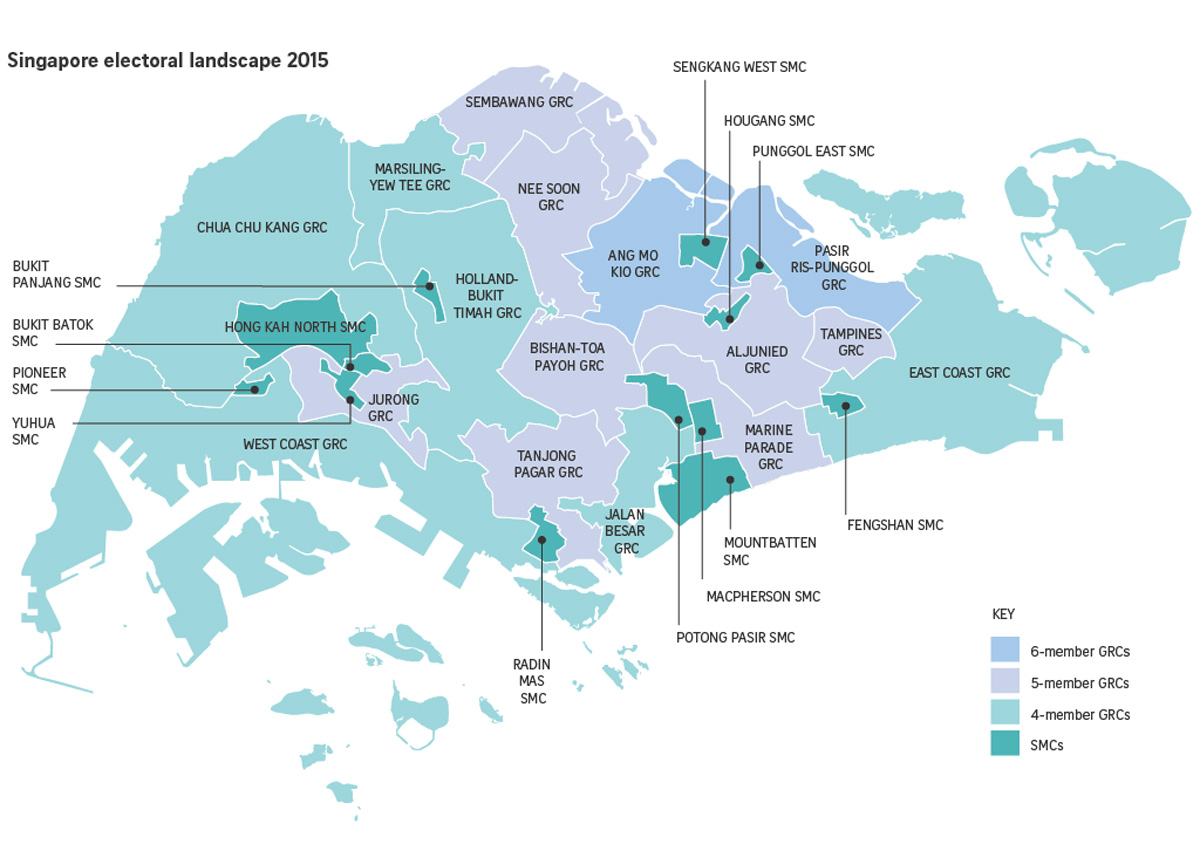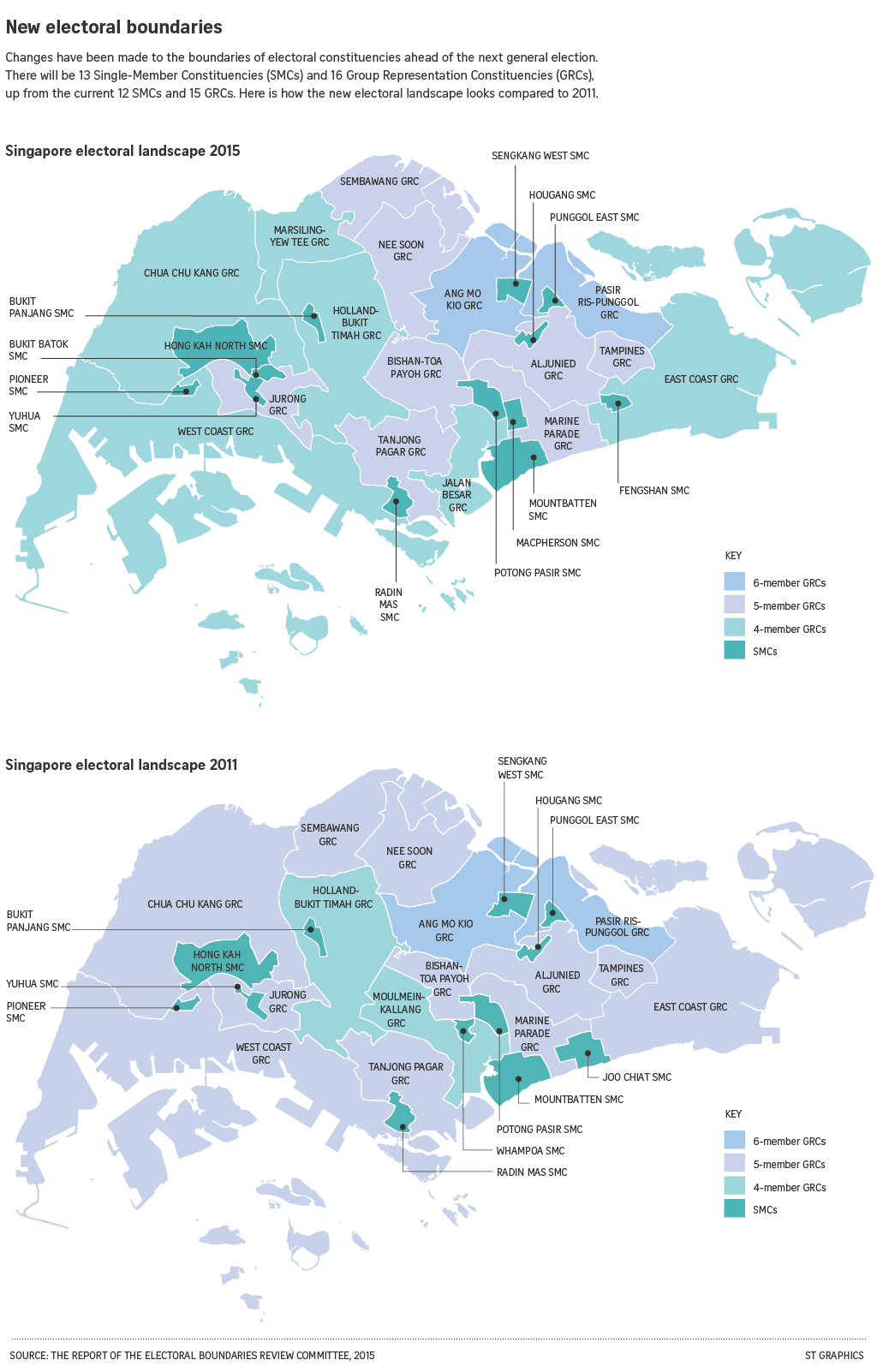Reader Lin Yulong wrote to askST: “Why do we redraw electoral boundaries every time we have general elections?”
The Straits Times’ Deputy News Editor (Political) Zakir Hussain answers.
Electoral boundaries have been redrawn at every general election (GE) for several reasons.
The boundaries are determined by a committee appointed by the Prime Minister, who sets out guidelines – or terms of reference – for them. While the committee puts out a report on these changes, it does not go into detailed explanations on how it came about these decisions.
But observers have identified three key considerations behind boundary changes.
One major reason is population shifts as a result of new housing developments, such as new flats in Punggol and Yew Tee.
When the Electoral Boundaries Review Committee came up with new boundaries ahead of GE2015, it was asked to “take into consideration significant increases or decreases in the number of electors in the current electoral divisions as a result of population shifts and housing developments since the last boundary delineation exercise”.
This explains why a new GRC was formed in the north-west of Singapore – Marsiling-Yew Tee GRC – and why several areas of GRCs in the north-east were also redrawn.
A second reason is to address the political requirements spelt out in the brief to the committee.
For example, the Government had, ahead of the previous two GEs, promised to reduce the average size of group representation constituencies (GRCs) and have more single-member constituencies (SMCs).
So ahead of GE2011 and GE2015, Prime Minister Lee Hsien Loong directed the committee to reduce the average number of MPs in a GRC and ensure at least 12 SMCs.
Underpinning both the above reasons is the need for the 2.4 million eligible voters in Singapore to – more or less – have equal say in electing their MP or team of MPs.
For the 2015 boundary redrawing, the committee worked on the basis of a range of 20,000 to 37,000 voters per MP. It was also mindful that a GRC with fewer MPs should not have more voters than a GRC with more MPs.
Observers also point to political considerations in the way boundaries are shaped.
On one hand, opposition-held seats have tended to not have their boundaries redrawn to minimise allegations of unfair play. Thus in the latest exercise, Aljunied GRC and Hougang SMC saw no changes to their boundaries. Even Potong Pasir, which had been in opposition hands for 27 years till GE2011, saw its boundaries left intact last year.
But on the other hand, some constituencies that have seen close contests have been known to be redrawn. For instance, Joo Chiat SMC, which the PAP won by fewer than 400 votes in GE2011, was absorbed into Marine Parade GRC ahead of GE2015.
But changes to constituency boundaries have affected fewer voters in recent electoral cycles.
Some of the more drastic boundary changes happened ahead of GE1988, GE1991 and GE1997 when three-member GRCs were introduced, followed by four-member GRCs and then five-and six-member GRCs in three consecutive elections.
Ahead of GE2011, some three in 10 voters found themselves in a new electoral division. At GE2015, only one in five voters were affected.

This article was first published on March 30, 2016.
Get a copy of The Straits Times or go to straitstimes.com for more stories.







